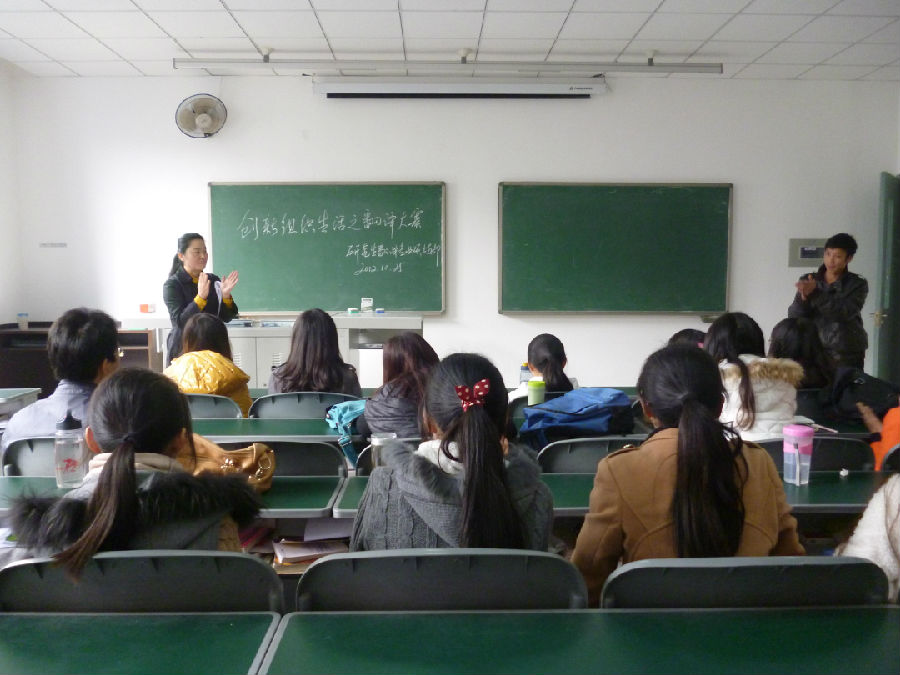 返回
教育头条
返回
教育头条

考研英语翻译题型要点解析
考研英语翻译向来是难度较大,另许多同学头疼的题型,而且考研英语的大纲明确说了本题型主要考查考生准确理解结构或概念较复杂的英语文字材料的能力。足以见其难度。除了词汇概念较复杂外,其句子结构较复杂。
首先,我们要识别什么是定语从句。首先定从是修饰名词的从句,常见的形式是N. that/which/who从句,从属连词需在定语从句中做主语、宾语或表语等成分。此外,常见的定语从句还有如下形式:
时间N when
地点N where
Reason why
如:I don’t know the time when he left.我不知道他离开的时间。
翻译:定语从句部分较长 顺译,从连不译/重复N/代词
定语从句较短 倒译 ……的 N.
Allen’s contribution was to take an assumption (that )we all share—that because we are not robots we therefore control our thoughts—and reveal its erroneous nature.本句that为老师补充,we all share为省略了that的定语从句。破折号前有两个谓语动词was和share,但本句并无并列或从属连词,所以为省略了that的定从。定语部分较短,提到assumption前,翻译为……的猜想。
译文:艾的贡献是提出一个我们共有的猜想——因为我们不是机器人,因此我们可以控制我们的思想——并且揭露了它的错误的本质。
Chomsky’s grammar should show patterns of language change that are independent of the family tree or the pathway tracked through it, whereas Greenbergian universality predicts strong co-dependencies between particular types of word-order relations. 本句中that在从句中做主语,所以为定从,较长,所以采用顺译原则。整个定语从句修饰patterns,所以在翻译that时可重复其修饰的名词。

译文:乔姆斯基的语法应该展示出语言变化模式,这种模式独立于谱系或由谱系所生成的路径,而格林伯格的普遍性理论则预测出特定词序关系间有着较强的依附关系。
The relationship between humans and the land we live on has evolved over hundreds of thousands of ears, but no period has involved such rapid changes as the past century, when we began using land in new ways.本句we live on 同样是省略了that的定从,较短所以提到名词前译为……的,when从句通常引导时间状语从句,但本句when前有表示时间的名词the past century,所以为定从,顺译,when译为重复修饰的名词。
译文:人类和我们居住的陆地的关系已经发展了数十万年,但是没有哪个时期像上世纪那样发生如此巨大的变化。上世纪我们开始以新的方式使用陆地。
首先,我们要识别什么是定语从句。首先定从是修饰名词的从句,常见的形式是N. that/which/who从句,从属连词需在定语从句中做主语、宾语或表语等成分。此外,常见的定语从句还有如下形式:
时间N when
地点N where
Reason why
如:I don’t know the time when he left.我不知道他离开的时间。
翻译:定语从句部分较长 顺译,从连不译/重复N/代词
定语从句较短 倒译 ……的 N.
Allen’s contribution was to take an assumption (that )we all share—that because we are not robots we therefore control our thoughts—and reveal its erroneous nature.本句that为老师补充,we all share为省略了that的定语从句。破折号前有两个谓语动词was和share,但本句并无并列或从属连词,所以为省略了that的定从。定语部分较短,提到assumption前,翻译为……的猜想。
译文:艾的贡献是提出一个我们共有的猜想——因为我们不是机器人,因此我们可以控制我们的思想——并且揭露了它的错误的本质。
Chomsky’s grammar should show patterns of language change that are independent of the family tree or the pathway tracked through it, whereas Greenbergian universality predicts strong co-dependencies between particular types of word-order relations. 本句中that在从句中做主语,所以为定从,较长,所以采用顺译原则。整个定语从句修饰patterns,所以在翻译that时可重复其修饰的名词。

译文:乔姆斯基的语法应该展示出语言变化模式,这种模式独立于谱系或由谱系所生成的路径,而格林伯格的普遍性理论则预测出特定词序关系间有着较强的依附关系。
The relationship between humans and the land we live on has evolved over hundreds of thousands of ears, but no period has involved such rapid changes as the past century, when we began using land in new ways.本句we live on 同样是省略了that的定从,较短所以提到名词前译为……的,when从句通常引导时间状语从句,但本句when前有表示时间的名词the past century,所以为定从,顺译,when译为重复修饰的名词。
译文:人类和我们居住的陆地的关系已经发展了数十万年,但是没有哪个时期像上世纪那样发生如此巨大的变化。上世纪我们开始以新的方式使用陆地。
好了,就说这么多,希望对大家有用。我是你的学习顾问王敏,选课有问题,快来找行家,我会为你匹配最适的课程,欢迎大家关注我微信(18560125702),学姐近10年教培行业工作经验,从现在开始我就是你的私人顾问,为您的课程进行一个详细系统的讲解哦。返回教育宝头条
【免责声明】本文仅代表作者本人观点,与教育宝无关。教育宝对文中陈述、观点判断保持中立,不对所包含内容的准确性、可靠性或完整性提供任何保证。请读者仅作参考,特此声明!





